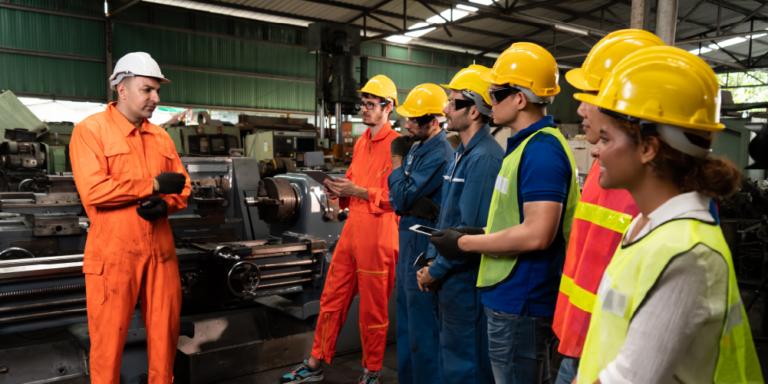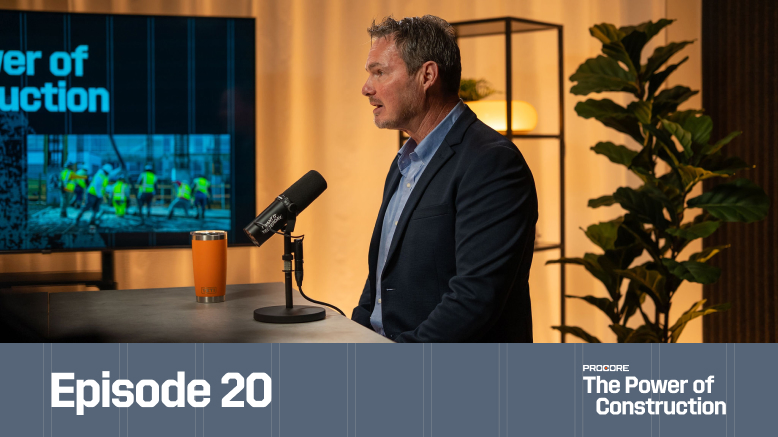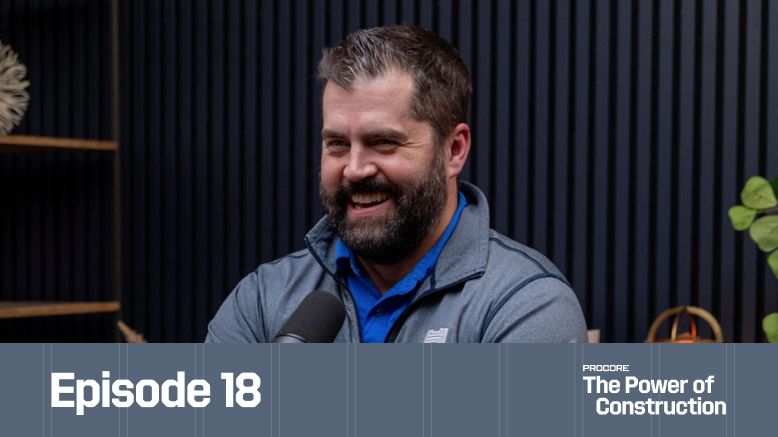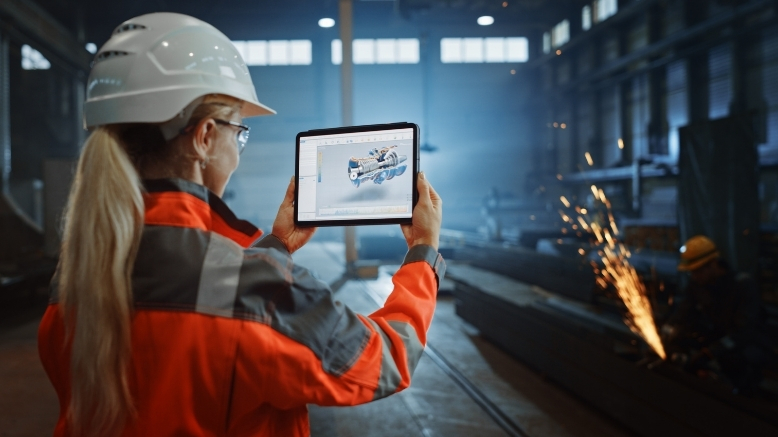— 8 min read
Safety stand-downs: 5 steps for success




Last Updated Sep 29, 2025

Clark Jensen
Strategic Product Consultant, Quality & Safety
10 articles
Clark Jensen joined Procore as a Senior Strategic Product Consultant, Quality & Safety where he spearheads product knowledge education and executes product demonstrations. He brings several years of experience in roles both on and offsite as a former senior project safety manager for a general contractor in Salt Lake City, and a senior risk control consultant for a large U.S.-based insurance firm.

Bob Hanes
Founder
15 articles
Bob Hanes is a professional writer and entrepreneur. He previously worked as a military sales and applications engineer for an aerospace firm, and cofounded a biotech company that creates drug screening solutions for the pharmaceutical industry. Bob has an MBA from the University of Buffalo in Logistics, Materials, and Supply Chain Management, and a BE in Mechanical Engineering. He is an avid Buffalo Bills fan.

Anthresia McWashington
Content Manager
20 articles
Anthresia McWashington is a Content Manager at Procore. She previously worked as an editor and reporter for Gulf Energy Information and Houston Media Group. She earned her BA in Communications and Journalism from the University of Houston. Anthresia loves track & field and practicing her French. She lives in Houston.

Kristen Frisa
Contributing Writer
112 articles
Kristen Frisa is a contributing writer for Procore. She also contributes to a variety of industry publications as a freelance writer focused on finance and construction technology. Kristen holds a Bachelor of Arts in Philosophy and History from Western University, with a post-graduate certificate in journalism from Sheridan College. She lives in Ontario, Canada.
Last Updated Sep 29, 2025

Construction jobsites are areas where personal safety is of utmost importance. Severe safety violations, injuries or even deaths can occur onsite. Safety measures are paramount, one of which is the safety stand-down.
This article discusses what safety stand-downs are, why they are important and how construction firms can hold successful stand-downs that improve the safety of their construction site.
Table of contents
What is a safety stand-down?
A safety stand-down is an event where employers engage directly with employees about safety. They provide an opportunity for the workforce to take a break and focus on safety-related discussions. These discussions can range from job-specific hazards, protective methods and the company's safety policies, goals and expectations.
Sometimes, stand-downs are a reactive response to a safety-related incident, but they can also be a proactive tool for safety education so teams are aware of potential incidents or risks.
The success of a safety stand-down is not solely the responsibility of the safety officer or management. Everyone, from the top management to the on-ground workers, plays a role in ensuring a successful safety stand-down. When the construction team works together, they can highlight just how important safety is and make the issue hit home with workers.
Why safety stand-downs in construction are important
Safety stand-downs are crucial in the construction industry for several reasons. Construction is considered one of the most dangerous career fields in the U.S., with a significant number of work-related incidents reported each year. In 2021 alone, the Occupational Safety and Health Administration (OSHA) issued more than 5,400 violations for falls, totaling a combined $28.8 million in penalties. Furthermore, there were 1,008 deaths in construction, with 65.5% of all construction deaths resulting from a Focus Four incident.
Stand-downs foster a culture of safety among workers, which is helpful in reducing work-related incidents. Additionally, safety stand-downs are not just for major incidents. Construction firms can also use them to discuss near-misses and other potential hazards, reinforcing the importance of constant vigilance on the job site. This proactive approach helps prevent accidents before they happen.
It’s important to recognize that stand-downs are a collective responsibility. Everyone, from top management to onsite workers, plays a role in ensuring a safety stand-down runs successfully. This collaborative effort not only ensures the effectiveness of the stand-down, but also strengthens the overall safety culture within the organization. OSHA recognizes the importance of these events, which is why they hold a National Safety stand-down event each year, where employers can receive a certificate of participation.
Safety stand-downs in construction are a vital tool in promoting and maintaining safety standards on job sites. They provide a platform for open dialogue about safety, encourage collective responsibility and help in reducing the occurrence of severe safety violations, injuries and deaths in the construction industry.
Go beyond OSHA regulations.
The Procore Safety Qualified program provides construction professionals with everything they need to know to create a culture of safety.

Understanding how safety stand-downs work
Safety stand-downs are typically initiated on a voluntary basis by a project team, which may include the project director, project manager and the site safety representative. The team collectively decides when to hold a safety stand-down, typically in response to an identified safety concern or risk.
One of two scenarios can trigger the call for a stand-down: a reactive response to an incident or a proactive attempt to prevent an incident from occurring. In the reactive scenario, an incident or near-miss happens on site, prompting the team to halt operations and focus on the specific safety issue. The project team uses this opportunity to highlight the significance of the incident, engage the workforce in discussion about the situation and explore preventive measures.
For example, a construction company might hold a safety stand-down following a near-miss incident involving scaffolding. The company's safety officer could lead the stand-down, discussing the incident, the potential hazards that led to it and the measures that could prevent similar occurrences in the future.
Alternatively, safety stand-downs can be proactive. This usually occurs when there's an incident or an identified risk in the wider construction industry that hasn't yet affected the specific project site.
The project team holds a stand-down to ensure that their workforce is aware of the incident or risk and takes steps to prevent a similar occurrence on their site. These gatherings serve as a crucial platform for safety education, reinforcing the commitment to a safe and healthy work environment.
5 steps to complete a successful stand-down
There is no set formula for conducting a stand-down in construction, but putting together a plan that prioritizes the end goal and keeps participants engaged typically involves some key steps.
1. Establish purpose and goals.
The first step is to define the purpose of the stand-down. This could be to address a specific safety concern, reinforce safety policies or discuss recent incidents that occurred offsite or onsite. The goals of the stand-down should be clear and measurable. Setting goals enables management to ensure that safety measures are being adhered to.
2. Plan and schedule the safety stand-down.
Construction firms should schedule the stand-down at a time that is convenient for all employees. It should also be long enough to cover all the necessary topics without rushing, but shouldn’t waste critical work time that affects the project’s completion timeline. Executives and managers need to ensure that as many workers attend the meeting as possible.
3. Decide on topics, speakers or engaging activities.
The topics construction firms should discuss during the stand-down should be relevant to the employees and the work they do. This could include job-specific hazards, protective methods, recent incidents, industry developments, the company's safety policies, and more.
Depending on the size and nature of the company, the stand-down could include presentations by safety experts, discussions led by supervisors or interactive activities like equipment inspections or rescue plan development. These activities can lead to a more active and receptive audience which should result in better safety results.
4. Execute the stand-down.
In addition to proper planning, executing the stand-down is equally important. Below are some key steps to ensure the stand-down runs smoothly:
- Create an inviting environment: The environment should be conducive to open discussion and learning. This could involve arranging the space in a way that encourages interaction or providing refreshments.
- Host an engaging presentation: Construction firms should present the information in a clear and engaging way. This could involve using aids like real-life examples or interactive activities.
- Encourage employee interaction and engagement: Employees should be encouraged to participate in the discussion, ask questions and share their experiences.
- Provide feedback opportunities: Employees should have the opportunity to provide feedback on the stand-down, including what they found helpful and what could be improved. This feedback is critical to help management create more effective safety meetings.
- Communicate future plans: At the end of the stand-down, construction firms should clearly communicate the next steps to their employees. This could include any changes to safety procedures, follow-up training or future stand-downs. Without actionable next steps, a jobsite team may not progress toward their safety goals.
5. Take action after the stand-down.
Once the stand-down is completed, both leadership teams and employees should have actionable steps to take. These could include:
- Compile and review employee feedback: This feedback can provide valuable insights into the effectiveness of the stand-down and areas for improvement.
- Update and implement safety procedures/plans: If the stand-down identified areas where construction forms could improve safety procedures or plans, they should make these changes and communicate them to the employees.
- Archive data for future reference: Information from the stand-down, including the topics discussed, feedback received and any changes made as a result, should be archived for future reference. Having secure document software can help easily facilitate the process of keeping up with project safety data and be instrumental in planning future stand-downs and tracking progress over time.
The benefits of conducting safety stand-downs
u003cstrongu003eEnhanced communicationu003c/strongu003e
Safety stand-downs provide an opportunity for open dialogue between management and employees, where they can share safety concerns and suggestions for improvement.
Injury and accident prevention
Focusing on current safety practices and addressing potential hazards can help prevent workplace injuries and accidents before they occur.
Creates a culture of safety
Stand-downs help to create an environment where safety is a shared value among all workers, rather than just the responsibility of safety managers.
u003cstrongu003eIncreased awareness and educationu003c/strongu003e
These events serve to educate employees on safety protocols and increase awareness of potential workplace hazards, reinforcing the importance of safety in daily operations.
u003cstrongu003eRegulatory complianceu003c/strongu003e
Regular safety stand-downs help the organization remain compliant with industry regulations and standards, potentially avoiding fines and legal issues.
u003cstrongu003eImproved moraleu003c/strongu003e
Demonstrating a commitment to safety can improve employee morale and worker productivity, as workers feel valued and protected by their employer.
Who should participate in a safety stand-down?
Everyone in the organization should participate in safety stand-downs, from management to frontline workers. Inclusivity means that everyone knows and understands the safety practices.
While in-house safety officers may lead the discussions, supervisors and managers can help answer any questions about how to implement practices into daily workflows. Contractors and union representatives may also be present.
Stand-downs can help enhance construction safety culture
Safety stand-downs, when properly planned and executed, can significantly enhance the safety culture within a construction firm. They are an essential part of a comprehensive approach to safety that involves everyone from top management to onsite workers.
Construction firms can significantly reduce the risk of work-related incidents and create a safer, healthier work environment for all by creating open dialogue about safety, promoting collective responsibility and continuously reviewing and improving safety procedures.
Was this article helpful?
Thank you for your submission.
100%
0%
You voted that this article was . Was this a mistake? If so, change your vote
Scroll less, learn more about construction.
Subscribe to The Blueprint, Procore’s construction newsletter, to get content from industry experts delivered straight to your inbox.
By clicking this button, you agree to our Privacy Notice and Terms of Service.
Thank you!
You’re signed up to receive The Blueprint newsletter from Procore. You can unsubscribe at any time.
Categories:
Written by

Clark Jensen
Strategic Product Consultant, Quality & Safety | Procore
10 articles
Clark Jensen joined Procore as a Senior Strategic Product Consultant, Quality & Safety where he spearheads product knowledge education and executes product demonstrations. He brings several years of experience in roles both on and offsite as a former senior project safety manager for a general contractor in Salt Lake City, and a senior risk control consultant for a large U.S.-based insurance firm.
View profile
Bob Hanes
Founder | Resonant Lab
15 articles
Bob Hanes is a professional writer and entrepreneur. He previously worked as a military sales and applications engineer for an aerospace firm, and cofounded a biotech company that creates drug screening solutions for the pharmaceutical industry. Bob has an MBA from the University of Buffalo in Logistics, Materials, and Supply Chain Management, and a BE in Mechanical Engineering. He is an avid Buffalo Bills fan.
View profile
Anthresia McWashington
Content Manager | Procore
20 articles
Anthresia McWashington is a Content Manager at Procore. She previously worked as an editor and reporter for Gulf Energy Information and Houston Media Group. She earned her BA in Communications and Journalism from the University of Houston. Anthresia loves track & field and practicing her French. She lives in Houston.
View profile
Kristen Frisa
Contributing Writer | Procore
112 articles
Kristen Frisa is a contributing writer for Procore. She also contributes to a variety of industry publications as a freelance writer focused on finance and construction technology. Kristen holds a Bachelor of Arts in Philosophy and History from Western University, with a post-graduate certificate in journalism from Sheridan College. She lives in Ontario, Canada.
View profileExplore more helpful resources

Why Don’t We Protect the Whole Person?
Behind every safety incident is a person — and behind that person is a story we rarely ask about. Were they already exhausted before they arrived on site? Did they...

What Drives Better Safety Outcomes—Carrot, Stick, or “Zero Harm”?
On paper, construction has never looked safer. In reality, mental health claims are rising, workers are disengaged and the compliance playbook is broken. Garry Mansfield, co-founder of Scratchie, argues the...

How Close Are We to Bridging the Design-Build Divide?
For decades, construction decisions have often been made based on gut instinct. But what if the real barrier to transformation isn’t technology—it’s the divide between design and construction? In episode...

Gain Without Pain: Leveraging Technology for Strategic Safety Programs
In safety, there is always room for improvement, and technology creates the ability to scale safety programs that drive risk mitigation, operational efficiencies and competitive advantage. In fact, builders who...
Free Tools
Calculators
Use our calculators to estimate the cost of construction materials for your next project.
Templates
Find a template to help you with your construction project tasks.
Material Price Tracker
Get the latest U.S. retail prices and view historical trends for common building materials.
Glossary
Explore key terms and phrases used in the industry.
